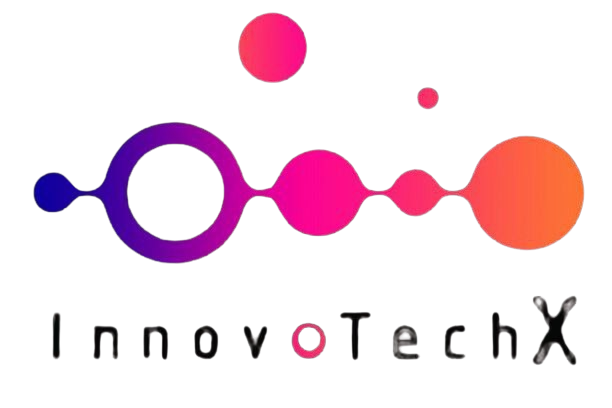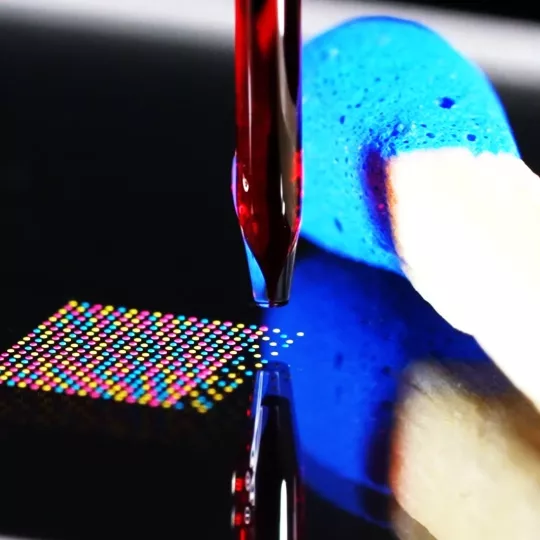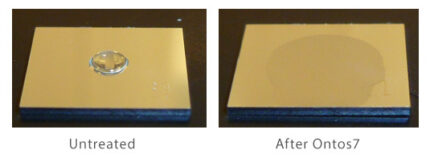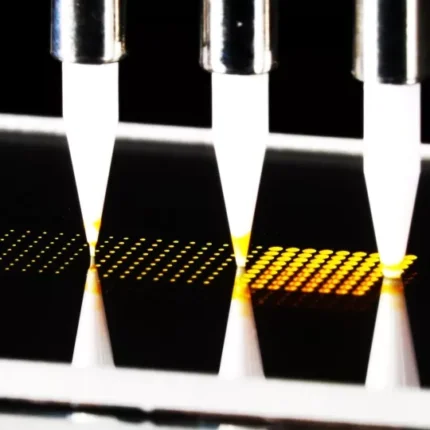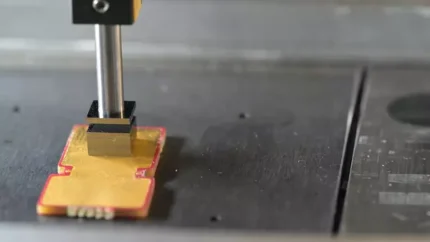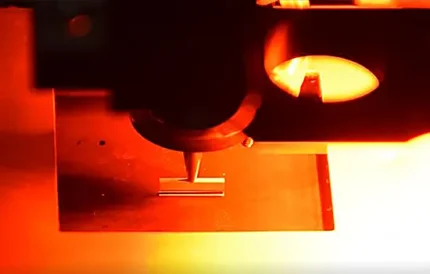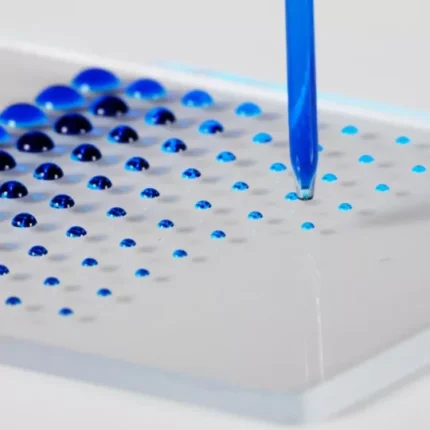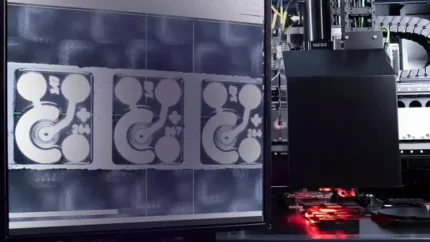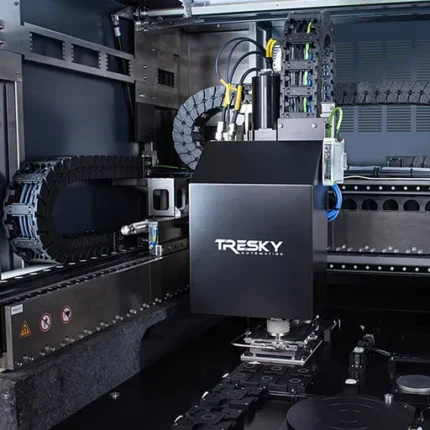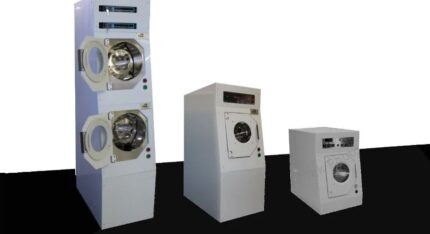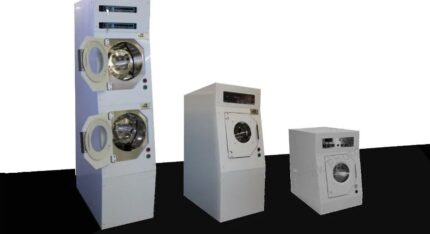- Bonder & Flip Chip
- Atmospheric Plasma Cleaner
- Vacuum Plasma Cleaner
- Spin Rinse Dryer
- Dispensing & Micro/Nano Printing System
- Lithography Process Systems
- Diffusion and LPCVD Furnaces
- Rapid Thermal Processing & Annealing
- Vacuum Soldering Systems
- Parylene Coating System
- Deposition System
- Hollow Cathode Plasma Source
- Plasma Etching System
- Sintering Presses
- Wet Process & Plating Tool
- Vacuum Chamber
- Electron Beam & Photo Resist
- Deposition Materials
Non-contact – Picoliter Dispenser
Our Piezo-Driven MicroDispensers (PDMD) rely on ultra-fast volume displacement and can dispense a minimum of 20-30 picoliters. This piezo dispenser has the capacity to dispense up to 1000 droplets per second, enabling the transfer of larger volumes as well.
Picoliter dispensers offer precise and controlled liquid-dispensing capabilities. Through the contraction of a piezo ceramic actuator, these dispensers enable the dispensing of minute volumes of liquids with high accuracy. The digital liquid-handling approach, coupled with the aspiration/dispense cycle, further enhances their efficiency and versatility.
Picoliter dispensers have become indispensable tools in scientific research and industrial processes, with applications spanning many fields, including microarray fabrication, drug screening, biosensor development, microfluidics and printed electronics.
The PDMD can operate on all of the M2-family Microdispensing Instruments.
The iZERO can operate all Microdispensers from the M2-Family.
Category: Dispenser Types
Tags: biosensor, drug screening, microarray, microfluidics, nanofabrication, Picoliter dispensers, printed electronics
Description
Key Features
- 1000 Hz dispensing frequency
- Single droplet volume 30 pL to 400 pL
- Volume accuracy cv < 2 %
- Different orifice diameters available
- Highly inert borosilicate glass
- Not coated or treated otherwise
Basic Operation Principle
This picoliter dispenser operates through the piezoelectric actuator's voltage-induced contraction, displacing liquid in a glass capillary by 100-250 nanometers. Most liquid exits through the nozzle, with a fraction escaping upward.
The contraction's linearity with applied voltage establishes a key parameter. Simultaneously, the voltage's temporal application, pulse width, significantly influences droplet volume and velocity. Voltage governs velocity, while pulse width regulates volume.
This intertwined control of voltage and pulse width yields a methodical and precise liquid dispensation process, enhancing precision in experiments.
Dispensing Modes
- Stop-to-spot with Z-moves: The dispenser stops for each droplet deposition and moves up and down between consecutive positions to bypass possible obstacles. These movements cost time but can be necessary when dispensing onto specific locations of a non-planar, 3-dimensional target.
- Stop-to-spot, no Z-moves: Without the need to move the head up between consecutive positions, dispensing is much faster. This is always the case when dispensing onto planar targets.
- On-the-fly: The dispenser “flies” over the target and releases a droplet on defined positions during the flight. That way, up to 1000 droplets can be deposited, each at its own specific coordinates.
Digital Liquid Handling
Larger volumes are dispensed as a rapid succession of well-defined picoliter droplets, offering a key advantage by obviating the need for individual calibration. This streamlined approach enhances efficiency and temporal economy when dispensing diverse volumes within a single experiment, while preserving the vital aspects of precision and reproducibility imperative for scientific investigation.
This demonstrative video showcases the digital picoliter liquid-handling process, showing the dispensing of calibrated droplets at a frequency of 1000 Hz. The sequential deposition culminates in droplets of distinct volumes - 0.1, 0.5, 5, 10, and 100 nL - illustrating the dynamic continuum of this methodology.
Aspiration/Dispense Cycle
The aspiration/dispense cycle is a crucial aspect of picoliter dispensing, enabling efficient use of precious samples.
For example, as little as 2 µL of a sample is sufficient to dispense 10,000 picoliter-aliquots at different locations on a target. This allows for multiple experiments or the production of diagnostic chips with minimal sample usage.
To illustrate the aspiration/dispense cycle, this video showcases the process of aspirating 3 µL of a red, aqueous solution from a 5 µL droplet, followed by the dispensing of 150 pL-aliquots at different positions.
However, it's important to note that not all the aspirated sample can be dispensed without dilution towards the end. If the mixing is not enhanced by osmosis, or aspiration is too fast, then a minimum of 1 µL of the original 3 µL can be dispensed with no dilution.

